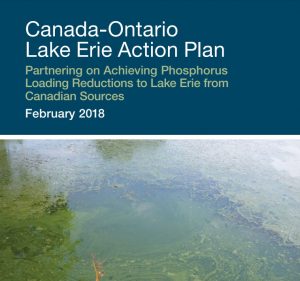
Plans from several levels of government to reduce phosphorus loadings in Lake Erie have been revealed.
Excess phosphorus is linked to the formation of algal blooms, which can lead to fish die-offs, as a result of low oxygen levels in the water. In some cases cases, harmful algal blooms can affect drinking water, as seen in Toledo, Ohio in 2014.
The draft, which was released last year, also involved a public meeting with local residents and members of the agricultural community.
The plan is divided into 5 categories to address the phosphorus-related issues Lake Erie experiences:
• Reduce phosphorus loadings: Cutting down phosphorus loadings from urban, agricultural and rural sources, and encouraging good environmental stewardship are core to reversing the present state of Lake Erie.
• Ensure effective policies, programs and legislation: Efforts by federal and provincial governments to reduce phosphorus loadings over the years have been effective. Enhancing, strengthening and building on these tools will help manage excess phosphorus inputs to aquatic ecosystems.
• Improve the knowledge base: Research, modelling and monitoring programs provide essential data to help us understand the effectiveness of our actions, how phosphorus enters Lake Erie, and the factors (such as climate change) contributing to the development of algal blooms and hypoxia. This data is also used to track spatial and temporal changes to the Lake Erie ecosystem, and more specifically to the nearshore and offshore waters and the watersheds.
• Educate and build awareness: Advancing awareness of and knowledge about phosphorus sources and impacts, as well as what can be done by the Lake Erie community to address phosphorus loadings from these sources, will contribute to reducing phosphorus in the lake.
• Strengthen leadership and co-ordination: Successful implementation of the plan will require expanding partnerships to include partners external to government, enhancing the current level of co-ordination by clarifying roles and responsibilities, and strengthening the effectiveness of existing committees and other governance structures.
Several levels of government, groups, and communities were involved in the process of developing the plan, such as Environment and Climate Change Canada, OMAFRA, Ontario Ministry of Natural Resources, Ontario MOECC, the City of London, the Municipality of Leamington, Lake Erie conservation authorities, and several others.
The Municipality of Chatham-Kent has also expressed concern about phosphorus loadings going into Lake Erie.
To read the full Lake Erie Action Plan, click here.
